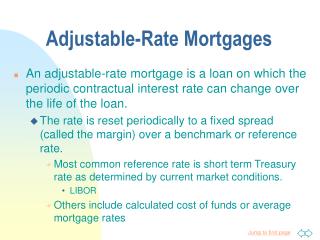The Ginnie Mae CUSIP aggregation program started in March 2019 and was completed in July 2019 and the Desk combined around 8,000 individual CUSIPs into about 8 aggregated ones. The aggregation process was created to reduce administrative expenses and operational intricacies associated with the Federal Reserve's company MBS portfolio using a straightforward and rules-based technique that is consistent with market.
functioning objectives and basic market practices. Other The New York Fed publishes comprehensive data on all settled SOMA company MBS holdings on its on a weekly basis. In addition, Fannie Mae, Freddie Mac, and Ginnie Mae provide info about aggregated CUSIPs, including the underlying company MBS, on their public sites. Yes. Details about private Fannie Mae, Freddie Mac, and Ginnie Mae firm MBS CUSIPs underlying the Federal Reserve's aggregated CUSIPs will stay available on these companies' public websites.
's recently enforced limitation on repooling of reperforming forborne loans yet once again penalizes servicers acting as necessary company in the continuing efforts to safeguard debtors facing financial challenge due to COVID-19. Let me count a few of the ways Ginnie Mae servicers are bearing the impact of debtor forbearance under the CARES Act: no maintenance charge income throughout forbearance of approximately a year( and potentially longer need to Congress decide its needed); no remedy for advance requirements for the duration of such forbearance; no modification of the structural impediments to personal financing to fund advances; and no repayment for the cost of funds for advances. In releasing APM-20-07 on June 29, 2020, Ginnie Mae decided to even more protect financiers from the prospective improved prepayment threat arising from early pool buyouts of forborne loans. This security, however, comes at the expense of servicers. By restricting servicers from depending on long-standing, genuine company activity early swimming pool buyouts paired with the repooling of reperforming loans Ginnie Mae has elected to consider a routine activity as unsuitable due to the fact that it is unnecessary and, gosh, may produce a profit. This commitment lasts until the defaulted loan is acquired out.
loan protected by the mortgaged home, the profits of which are used to bring the loan current. By using a junior lien, the loan does not need to be modified. Currently, a servicer might achieve a" stand alone partial claim" or a" home mortgage healing advance" without buying the delinquent loan from the pool, but servicers regularly integrate the acceptable early buyout of an overdue loan, a reinstatement through a" stand alone partial claim" or" mortgage healing advance, "and http://www.wfmj.com/story/43143561/wesley-financial-group-responds-to-legitimacy-accusations a repooling of the reperforming loan into recently issued securities. Initially, the borrower under a reperforming loan must have made timely payments for the six months instantly preceding the month in which the associated mortgage-backed securities are issued.
Second, the issue date of the mortgage-backed securities must be at least 210 days from the last date the loan was overdue." Reperforming Loans "are not restricted to loans that are restored through a" stand alone partial claim" or "mortgage healing advance." The term is broadly defined to be a loan that is not more than thirty days delinquent, formerly was purchased out of a Ginnie Mae swimming pool, and has the exact same rate and terms as the initially pooled loans. The APM only hints at the reason behind Ginnie Mae's change in position, specifying that "Ginnie Mae seeks to ensure that transactional activity associated with these options does not hinder market confidence in Ginnie Mae securities. "It highlights that FHA's "Stand Alone Partial Claim" and USDA's "Home loan Healing Advance" do not need pool repurchases unless the terms of.
Getting My What Are Brea Loans In Mortgages To Work

the loan need check here modification. Basically, Ginnie Mae is depriving servicers of an enduring, legitimate, optional organization method under the Ginnie Mae program obviously because this discretionary activity is not necessary to allow a servicer to cease maintenance advances in regard of forbearance. Generating a benefit from repooling reperforming loans in some way is considered as a nefarious activity. In isolation, insulating financiers in Ginnie Mae securities from improved prepayment risk connecting to forbearance definitely is a deserving public law goal. When compared to the expenses, costs and lost income servicers are bearing in regard of forbearance, one has to wonder whether Ginnie Mae is fairly stabilizing the interests of servicers and investors.
While Ginnie Mae might have the authority to revise the Mortgage-Backed Securities Guide from time to time, servicers have a right to reasonably depend on the basic construct of the program without product negative modifications not grounded in law or abuse. Servicers create, acquire and finance their Ginnie Mae MSRs based on this affordable expectation. When you desire to have fun in the sun right in.
your backyard, a pool of your own may be paradise. A swimming pool comes with a significant cost, though, so be prepared to spend for it with time. While you have a couple of various alternatives, among the most basic is to finance a new pool with a new home loan. Initially, call the loan provider with which you have your existing home mortgage to ask about a new mortgage.
Typically your current lending institution will be excited to retain your funding, potentially providing attractive interest and terms. the big short who took out mortgages. Keep in mind the terms used by your existing lending institution. Approach two or three other lenders to inquire about a brand-new home loan. With a brand-new lender, you will require to show proof of identity and earnings, warranty deed and property owner's insurance coverage. The new loan provider will investigate your credit and.
examine the worth of your home throughout a prequalification procedure. After validating your details and examining your credit reliability, the lender may extend you prequalification status.